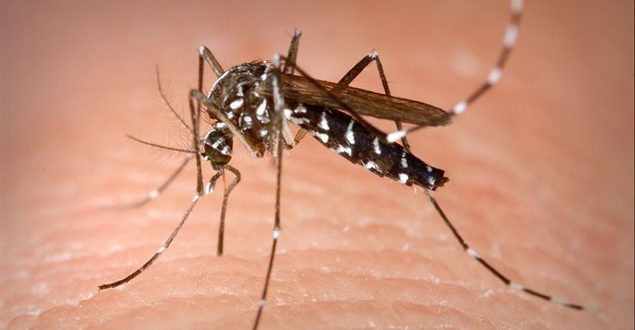One of the mosquito species known to carry the Zika virus has been discovered in southwestern Ontario.
Medical Officer of Health, Dr. Gary Kirk revealed that the Aedes albopictus mosquitoes, also known as the Asian tiger mosquito, is capable of transmitting viruses including Zika. However, he went on to say that it is not the species that is responsible for the majority of human cases of Zika virus infection in the Caribbean, South America and Florida.
Four Aedes albopictus mosquitoes were discovered last month in local traps during “routine monitoring and surveillance” for the West Nile virus, but all tested negative for Zika.
It’s not immediately known how the mosquito’s arrived in Ontario, however, it’s believed the adult mosquitoes were transported from the U.S. in shipping containers or other cross-border vehicle traffic. Extremely hot summer temperatures likely allowed for the species to exist in Windsor, since the Asian tiger is tropical species.
Some northern US cities, like Chicago, have seen instances of Aedes albopictus during hot summers but cold winters have killed them off.
“Ensuring that our community stays informed about infectious diseases and the local mosquito surveillance program is a key role of public health to the residents of Windsor-Essex County. The discovery of the Asian tiger mosquitoes in a local trap is an important reminder to everyone that we should continue to protect ourselves and our families from mosquito bites,” said Dr. Kirk.
Adult Aedes albopictus are easily recognized by the bold black shiny scales and distinct silver white scales on the palpus and tarsi (Hawley 1988). The scutum (back) is black with a distinguishing white stripe down the center beginning at the dorsal surface of the head and continuing along the thorax. It is a medium-sized mosquito (approximately 2.0 to 10.0 mm, males are on average 20% smaller than females).
Differences in morphology between male and female include the antennae of the male are plumous and mouthparts are modified for nectar feeding. The abdominal tergites are covered in dark scales. Legs are black with white basal scales on each tarsal segment. The abdomen narrows into a point characteristic of the genus Aedes. Field identification is very easy because of these distinct features.
Agencies/Canadajournal
 Canada Journal – News of the World Articles and videos to bring you the biggest Canadian news stories from across the country every day
Canada Journal – News of the World Articles and videos to bring you the biggest Canadian news stories from across the country every day



